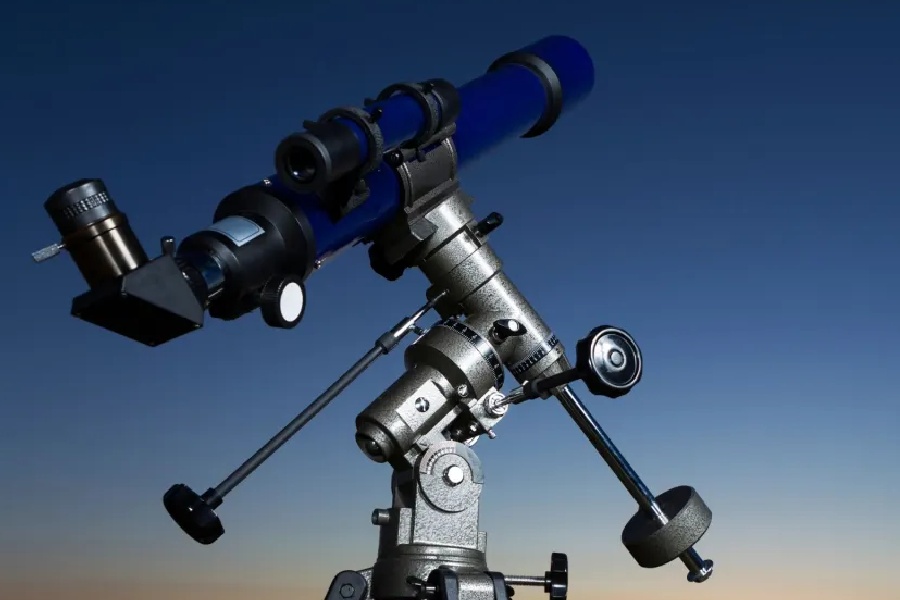Taking good care of a telescope not only ensures optimal performance, longevity, and the quality of your astronomical observations but also guarantees you get to keep them for years to come. Telescope maintenance is the key process that allows these complex instruments to continue functioning properly. But what exactly does maintaining a telescope entail?
We have to say that keeping all those components running smoothly takes a lot of care. Therefore, we are to tackle upon the essential maintenance procedures performed on optical and radio telescopes of all sizes. You’ll learn about common issues that arise and how trained technicians address these problems.
What Is Telescope Maintenance?
Telescope maintenance involves the regular upkeep and care of optical and radio telescopes to keep them functioning optimally. It requires carefully inspecting, calibrating, realigning, and replacing telescope parts like optics, motors, sensors, and computing hardware.
Technicians perform maintenance procedures like cleaning mirrors, adjusting component alignments, troubleshooting issues, and updating software. Preventative maintenance done at scheduled intervals can catch problems early.
Major overhauls or component refurbishment may also be needed after years of use. Proper maintenance extends telescopes’ operational lifetimes and allows them to keep making accurate astronomical observations over decades of service.

Why is Telescope Maintenance Important?
Telescope maintenance is extremely important for longevity and performance. Regular upkeep provides major benefits for these complex instruments.
Ensuring long-term viability
Maintenance extends a telescope’s usable lifetime. It prevents small issues from becoming big failures. Regular care reduces breakdown risks and the need for major repairs.
Performing routine maintenance helps ensure a telescope remains viable over decades of operation. It allows early detection and correction of minor problems before leading to catastrophic failures.
Regular upkeep minimizes breakdown risks, reducing the need for hugely expensive and time-consuming major repairs.
Optimizing ongoing performance
Maintenance keeps telescopes operating at peak performance. It maintains alignment, calibration, and sensitivity. This results in sharper, higher-quality observations over time.
In addition, proper maintenance optimizes a telescope’s ongoing observational performance. It preserves optical and mechanical alignment and calibration. This allows the telescope to continue producing the sharpest, most sensitive data possible throughout its operational life.
Benefits of Proper Telescope Maintenance
Conducting regular maintenance provides major advantages for telescope owners. Ongoing care extends functionality and improves the user experience.
- Extended operational lifetime– regular upkeep allows telescopes to function optimally for decades. It reduces wear and tear and detects issues early on. Preventative maintenance is more affordable than major repairs.
- Improved performance and reliability– proper maintenance keeps components aligned and calibrated. It ensures smooth mechanical motion. Users get consistently sharp views and reliable operation. Suitable maintenance improves a telescope’s overall performance and reliability. It maintains proper alignment of optics, keeps mechanisms moving smoothly, and increases operational consistency.
- Improvement of image quality– proper telescope maintenance is critical for optimizing the clarity and sharpness of astronomical images. Regular upkeep enhances visual fidelity in multiple ways.
- Enhancing clarity– routine cleaning and realignment of optics reduces scattered light and aberrations, improving image contrast and definition.
- Increases sharpness– mechanical stability also retains critical alignments over time. together, these maintenance practices significantly enhance the quality of telescope imagery.
Consequences of Insufficient Maintenance
Undetected moisture and contamination can degrade optics, while moving parts may bind or jam without lubrication. Moreover, lenses left uncleaned allow dust buildup and haze. Ignored small leaks lead to severely degraded optics through water damage. Lack of lubrication causes mechanical parts to grind, bind, and seize up.
Importance of Preventative Care
Routine maintenance catches issues early when fixes are smaller. It prevents incremental damage and prevents pouring money into the drain. Regular maintenance of your telescope not only extends its lifespan but also brings significant financial benefits.
By investing in routine care, you can avoid expensive repairs and replacements, ensuring a more economical and enjoyable stargazing experience. The financial advantages include a prolonged lifespan, optimized performance, and a preserved resale value, offering a compelling return on your telescope investment.
Performing regular preventative maintenance identifies small problems while fixes are quick and affordable. This prevents damage from compounding and avoids expensive repairs later.
Conclusion
In conclusion, the value of telescope maintenance goes beyond preserving equipment—it’s an investment in prolonged enjoyment and financial prudence.
By embracing regular care, you safeguard your telescope’s longevity, optimize its performance, and save money in the long term. As you embark on your celestial explorations, consider the cost-effective measures and preventive actions shared here to ensure your astronomical companion remains a reliable guide to the cosmos.
